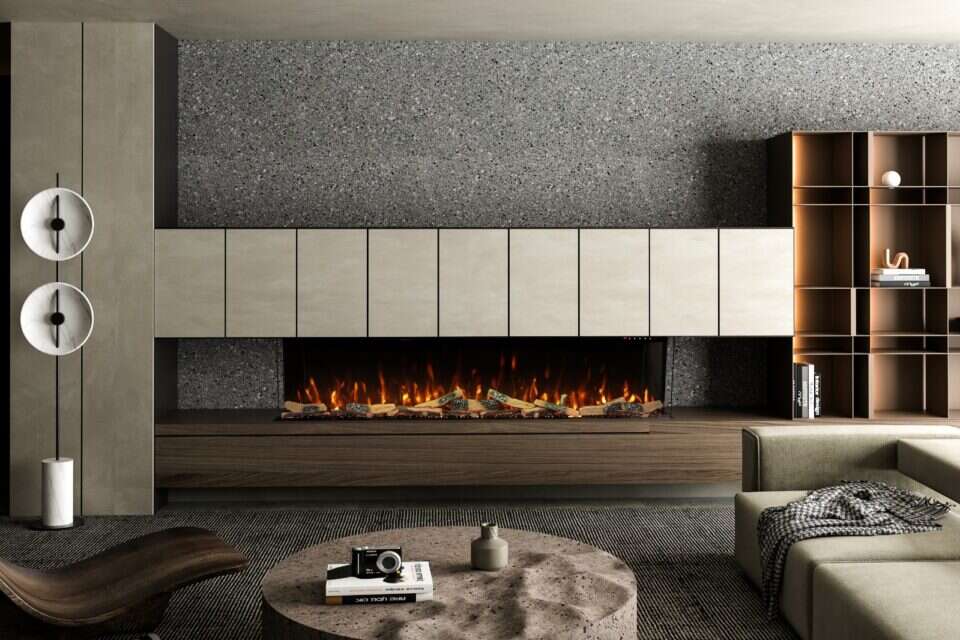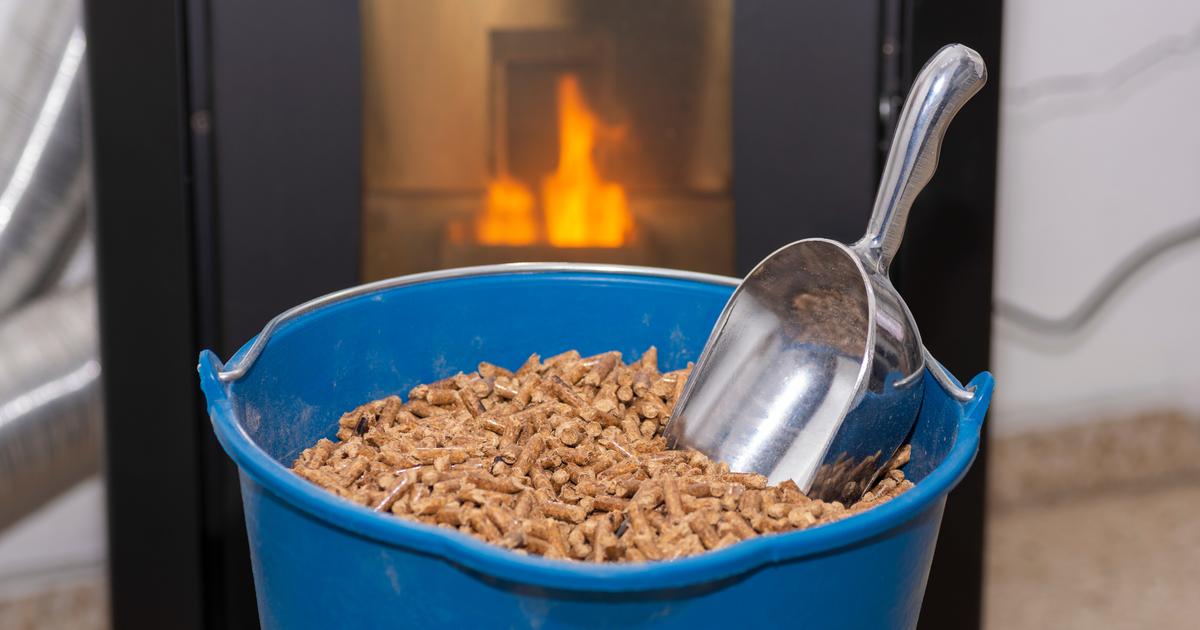About a year ago, the Ness Ziona municipality took a precedent-setting step when it banned the installation of wooden fireplaces in new homes and apartments being built throughout the city.
This is a dramatic move that to this day has been examined and scrutinized by heads of local authorities and legal advisers.
The municipality’s decision was made in the subcommittee on planning and construction, amid growing complaints from city residents against the use of wood-burning fireplaces on the pretext of heavy smoke, odor and air pollution harming the environment and being caused by smoke emissions in chimneys.
"The decision involves the licensing department in the municipality, so it is not possible to obtain a graduation certificate - Form 4, if wooden fireplaces have been installed in homes," explains Naor Yerushalmi, deputy mayor of Ness Ziona.
"Regarding the holders of wood fireplaces, the committee decided that if there are chimneys erected without a building permit, a warning note will be registered for the property for construction deviation until the issue is settled, which will delay the sale in the future."
Yerushalmi made the remarks at an online meeting held last February, in cooperation with local and regional authorities in Israel.
The purpose of the meeting was to find tools to deal with the phenomenon of wood fireplaces in Israel.
However, this is puzzling, since the rate of users of wood stoves for home heating in Israel is estimated at only about 350,000 households.
If so, why should it become an acute and urgent issue that has even come up for discussion in the Knesset?
It turns out that this is an issue that for quite a few local authorities in Israel is one of the main challenges and factors that pollute the environment.
"I am very surprised by the huge number of participants who came to the meeting, which shows that the issue is important and there is great motivation to address it," Yerushalmi said at the meeting.
"In recent years, there has been an increase in the use of wood-burning fireplaces in Ness Ziona, and hence the number of complaints has increased.
Keep the charcoal burning
Data from the Ministry of Environmental Protection and the Central Bureau of Statistics show that wood fireplaces in Israel are used by only about 5% of the population (mainly in detached houses), but emissions from chimneys occur in residential neighborhoods and communities. For the protection of the environment, it is noted that burning wood in fireplaces is one of the main sources of benzene in Israel.
"According to the ministry's emissions findings for 2018, the main sources of benzene emissions in Israel are: illegal burning of mixed waste, road transportation, industry, burning wood in fireplaces, gas stations, landfills and burning of agricultural agricultural waste."
In a discussion held about a year ago in the Knesset's Interior and Environmental Protection Committee, Daniel Weinberger, one of the leaders of the 'Wood Fireplace' health hazard movement, explained the height of the nuisance and danger: "A wood-burning fireplace emits 14 carcinogens. Many suffer and suffocate, and have no cure. Israel has wood fireplaces for about 5% of Israel's residents, and for only three to four months they light them and are responsible for 30% of particulate emissions in winter and about 7% of benzene emissions per year. "Three more carcinogenic substances than all electricity production in Israel. The solution is to ban this dangerous hobby now. What will the owners of the wood-burning fireplaces do?
Wood stoves and fireplaces are a common means of heating private homes, and in many localities around the country many of the landowners keep the tradition and indulge in a lit wooden bed that makes a crackling sound and aroma of wood smell.
After all, on a cool winter evening, when fog obscures landscapes and cold air seeps in, there can be nothing more relaxing, warming and fun than huddling around the fireplace alongside family and friends.
This is an age-old tradition, a culture that has taken root, which adds a luxurious garnet to the house, and some believe that it also increases its value.
On the other hand, tests and testimonies reveal a different reality that shatters the "familiar romantic image."
Neighbors who live near a wood-burning stove operator feel like they live in a kind of chimney, with a lingering smell of fire that sticks to everything.
Beyond the odor nuisance, the Ministry of Environmental Protection and environmental organizations warn that burning wood in a home fireplace creates dangerous air pollution inside the home space itself, endangers the household members and creates smoke nuisances that affect the health and well-being of neighbors.
In accordance with the Public Health Ordinance of 1940, local authorities are responsible for enforcement against environmental hazards and their ability to enact bylaws to reduce pollution hazards.
The Ness Ziona Municipality initiative joins a long list of local authorities that have begun banning the installation of wood-burning fireplaces in their area, such as Zichron Yaacov, Kiryat Tivon, Yokneam, Hod Hasharon and others - in order to protect residents' health and reduce smoke and odor emissions from chimneys.
The Even Yehuda local council, for example, recently passed a bylaw that gives it the authority to demand the evacuation of any wood-burning stove or fireplace that does not operate in accordance with the standard.
A campaign to raise awareness of the pollution emitted from wood-burning stoves in Pardes Hanna-Karkur, Photo: Promo ortal
At a meeting to deal with the issue that took place about a month ago in cooperation with representatives of local government, regional and environmental associations, a central argument was made about the lack of enforcement and legislation on the issue by the central government.
This is what the head of the Zichron Yaacov council, Ziv Desha, who also serves as chairman of the local government's environmental committee, said.
"The nuisance of operating fireplaces as they are practiced today is troubling local, regional and environmental associations. Almost zero legal tools are available to us, so we have our hands tied. "They are trying to deal with and respond to a phenomenon that is multiplying in the big cities as well, and not just in rural areas. In Zichron Yaacov, we launched a campaign to increase awareness that gives its signals, but does not solve the problem."
"This is an important and burning issue in many places and every year it is added, getting worse, due to population growth and new residents," said Ronen Feller, director of an environmental unit in the Upper Galilee, which dominates the Yesod HaMaala, Mevoot Hermon, Metula and Upper Galilee areas.
"These come with a dream to integrate into the countryside alongside a wood-burning fireplace. We now understand that only through flooding of awareness and social pressure can we make an impact. "This is not a scientific and accurate test, but it gives an indication and especially an opportunity to provoke a dialogue with the fireplace owner and explain to him what it does. In the end he decides. The result was that some fireplace owners informed us that significantly reduced the use of wood fireplaces and some even closed completely."
In the last two years, Kibbutz Neot Mordechai has faced a rift between the kibbutz members because of 17 families who used wood fireplaces.
Only recently did the members of the management reach an agreement according to which the hours of operation of the fireplaces will be limited, and no new wood fireplaces will be installed in the kibbutz area.
In addition, the kibbutz initiated an extraordinary move designed to help families switch to alternative means of heating.
"As part of the agreements, an unprecedented decision was made according to which the kibbutz will assist with an amount of NIS 5,000 for each family that decides in the next three years to switch to another means of heating. The agreement was signed about three months ago.
"We launched a campaign under the name 'My brother, you are suffocating me', which created a great echo," adds Yotam Eshel, spokesman for the Association of Cities and the Environment Sharon Carmel, who represents about 850 residents from Hof Carmel to Netanya, including Emek Hefer.
"In addition we are examining how local authority planning committees will set rules and restrictions for fireplace users."
As mentioned, although this is a relatively small scale of the total population that uses wood stoves, their impact on the environment is broad and harmful.
This is what happens in every city and town, including those living in desert areas and the Negev.
In the city of Arad, a mountainous area with varying topography, there are currently about 514 wooden fireplaces.
There, a decision was made to ban the installation of wood fireplaces in new construction, and the municipality's goal is for the city to be "clean" of these fireplaces by 2025. Instead, the municipality encourages residents to move to gas fireplaces, a move that should be natural in Arad. Natural, as well as in other cities like Ofakim and Be'er Sheva.
Put gas
What is happening in Israel characterizes what is happening in countries around the world.
In New York for example, similar to Israel, although only 2% of homes use home heating using wood burning, they produce much higher pollutant emissions from electricity generation and all transportation combined.
It is important to understand that the infection as a result of the emission of respiratory particles is also inside the house, and not just outside it.
New York State recently came out with a draft comprehensive plan designed to minimize greenhouse gases and help reduce global warming.
The program addresses serious health reasons associated with wood burning and encourages homeowners to switch to gas fireplaces.
At this time the New York State Department of Environmental Conservation (DEC https://www.dec.ny.gov/), which produced the draft plan, has no intention of punishing tree burners.
Instead, it offers more efficient incentives and heating technology that will lead to a reduction in wood burning.
In the fight for the most efficient fireplace, the efficiency of the gas fireplace beats the wood fireplace for economic and safety reasons.
Similar to wood fireplaces, gas fireplaces give the “tribal bonfire” feel around the fireplace, especially when offered on the market by developments such as a log-like ceramic log that goes up in flames.
The gas fireplaces burn cleanly and produce very little polluting emissions, without any dilution of oxygen in the house.
In addition, the gas fireplaces are equipped with two chimneys, one for exhaust and the other for oxygen suction from the outside, and using air blower technology allows heat dissipation in the house, which allows savings of about 30% in annual heating costs.
In addition, in recent years, technologies have been developed that allow the installation of gas fireplaces in high-rise buildings and towers without the need for a chimney.
The efficiency of the gas fireplace, which includes easy maintenance, without ash or soot in the chimney, has become an integral element in the design of the house and apartment.
The popularity of using gas fireplaces can be learned from the real estate company "Breeze" which combined the installation of gas fireplaces made by the Israeli ORTAL, as part of the technical specifications of the Alpha project located in Alfei Menashe. The gas fireplace offered by the CLASSIC collection Including a powerful air blower to dissipate heat in the space of the house.Before the first project that used the technology of Israeli society was established in Los Angeles, in a building called Century Tower which contains 276 apartment units - all installed gas fireplaces without chimney. blower.
Century Tower Los Angeles, Photo: Promo ortal
Ortal, known as the "Cinderella of the Global Fireplace Market", has over 200 fireplace models, a number of other models that are being tested and a number of other unique patents, the newest of which is the WILDERNESS flame fireplaces series, inspired by nature and featuring groundbreaking technology.
Who would have believed that from a country in the Middle East would come the world's leading technology in the field of gas fireplaces?
It was found, therefore, that if in the past it was important for the rooms in the house to be warm, today another need arises - that the home heating system will take a significant part in the design of the house, and if on the way it is possible to increase the value of the property.
The REDFINE real estate chain in Seattle has found: a fireplace raises the value of the property in the market.
Photo: Ortal Promo, Photo: Promo ortal
Experts around the world believe that fireplaces have the most popular properties for raising property value.
According to the REDFINE real estate network, which was founded in 2004 and is based in Seattle (Washington), properties with a fireplace offered on the market are worth more than similar properties without a fireplace, mainly because they are fireplaces with low installation and maintenance costs, such as gas fireplaces.
These record the most popular home trends, and become one of the smart investments.
It was also found that such properties, in which fireplaces are installed, receive higher viewing percentages at sales sites and are ranked among the leading properties that home buyers are looking for.
Advantages of gas fireplace
Clean combustion
Less polluting emissions
Without oxygen dilution at home
Installing two chimneys
Installation of air blower technology that allows heat dissipation
Natural gas is considered cheaper than wood
Easy maintenance
No ash and soot in the chimney that prevents fires
Ease of use
Operation on the remote








